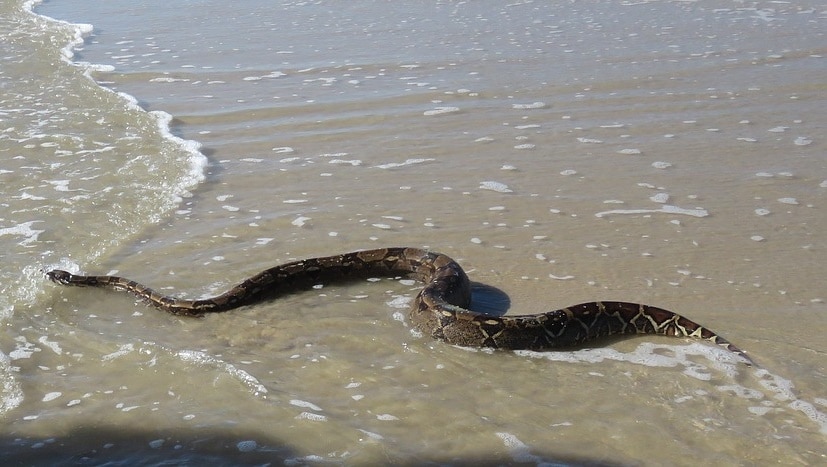Even though all snakes are known for their extremely impressive swimming capabilities, sea snakes are primarily known for living the most of their life in water.
Just like fish, they come up for air, but they can stay underneath the water for close to an hour. Since they require air to survive and need to come up for air regularly, they can primarily be found in shallow waters, and have mostly been spotted in the Indian Ocean, as well as warmer parts of the Pacific Ocean.
They are snakes, which means they still have the same striking ability that land-bound snakes possess, making them one of the top predators of fish, fish eggs and eels. They grow up to 2 meters long and according to research, belong to the Cobra family.
While they might have a smaller head than most snakes and their tails are flatter than most, they are considered quite dangerous and are not to be played with.
The dangers of sea snakes
In case you though theses water-bound creatures weren’t poisonous, think again.
One of the most feared and poisonous sea snakes of all is the Beaked Sea Snake, which can 8 people with just 3 drops of venom. Luckily for humans, these snakes have far shorter fangs than their family tree of snakes, which makes it very difficult for them to bite through a diver suit or your shoes.
They are reportedly also very unlikely to bite unless they are threatened.
When they do feel endangered, they spray an unpleasant musky liquid in front of their predators/ humans.
One of the biggest injustices is probably that they get mistaken for eels, or eels are mistaken for them on a regular basis. Especially, because eels are apart of the fish species and not snakes. Unlike sea snakes, they have gills and not lungs. That is the number one reason why they need to go up for air regularly.
Get a water machine and home water cooler from Living-Water in London.






